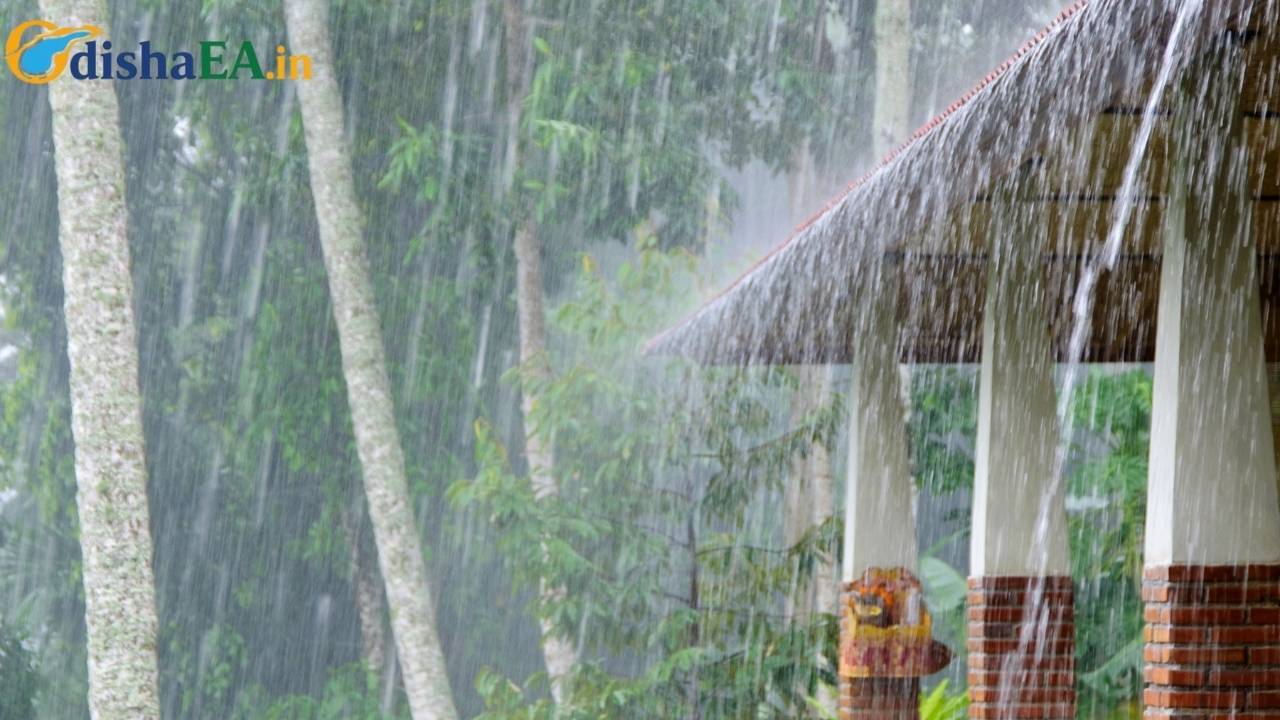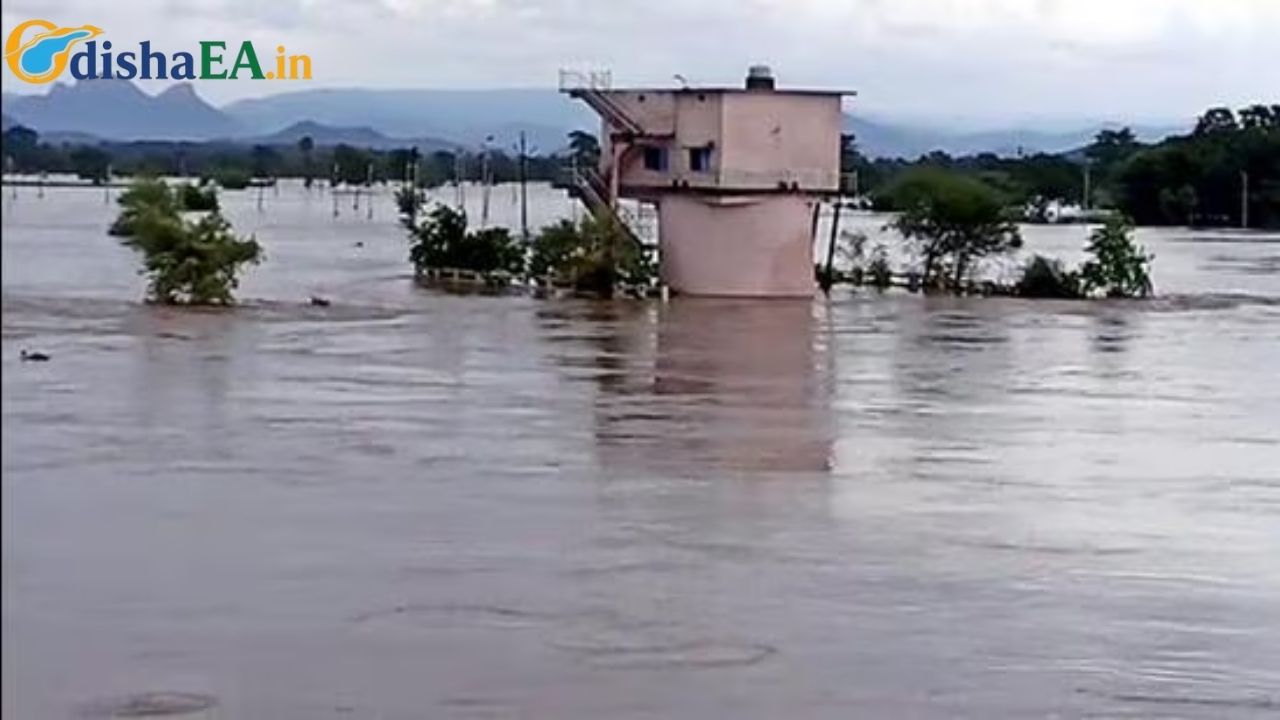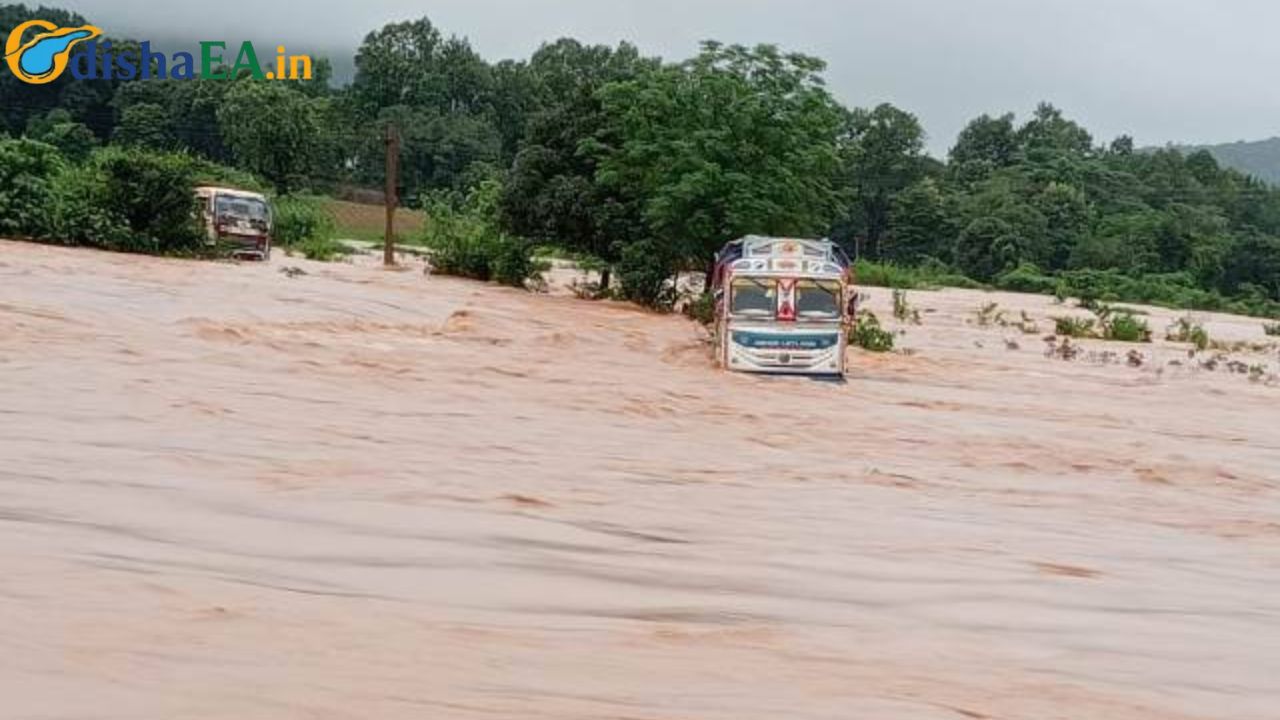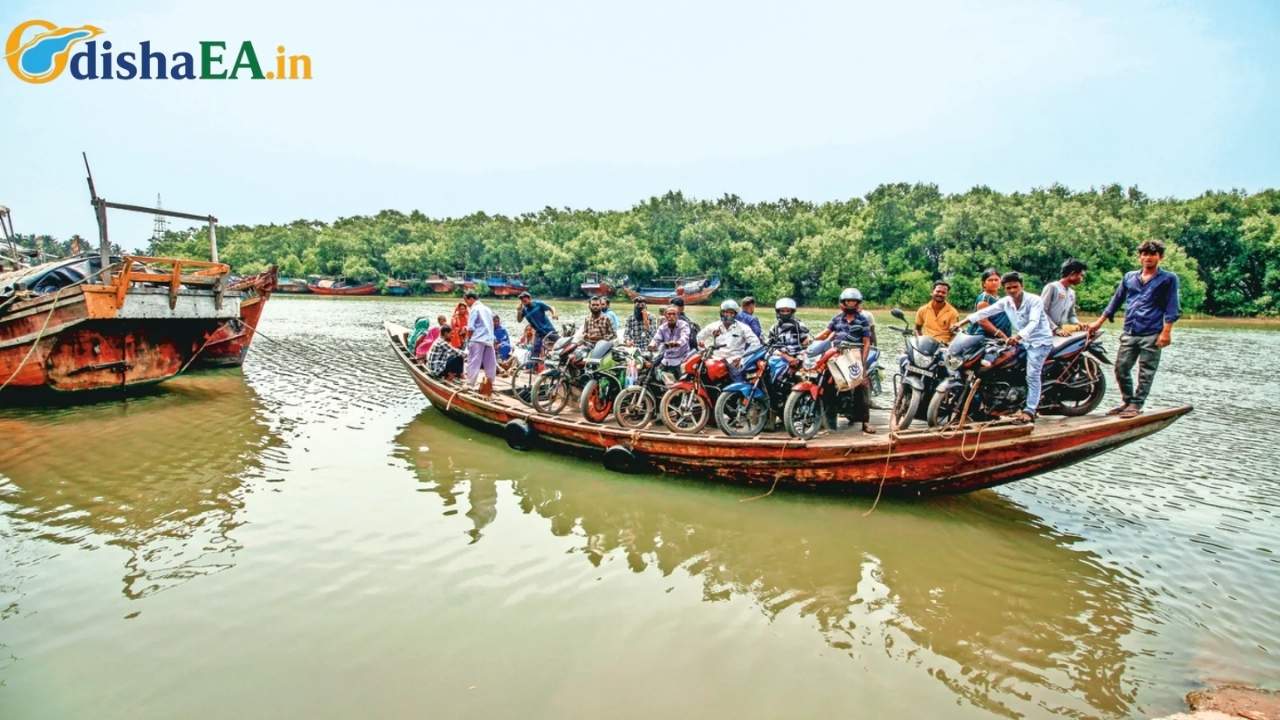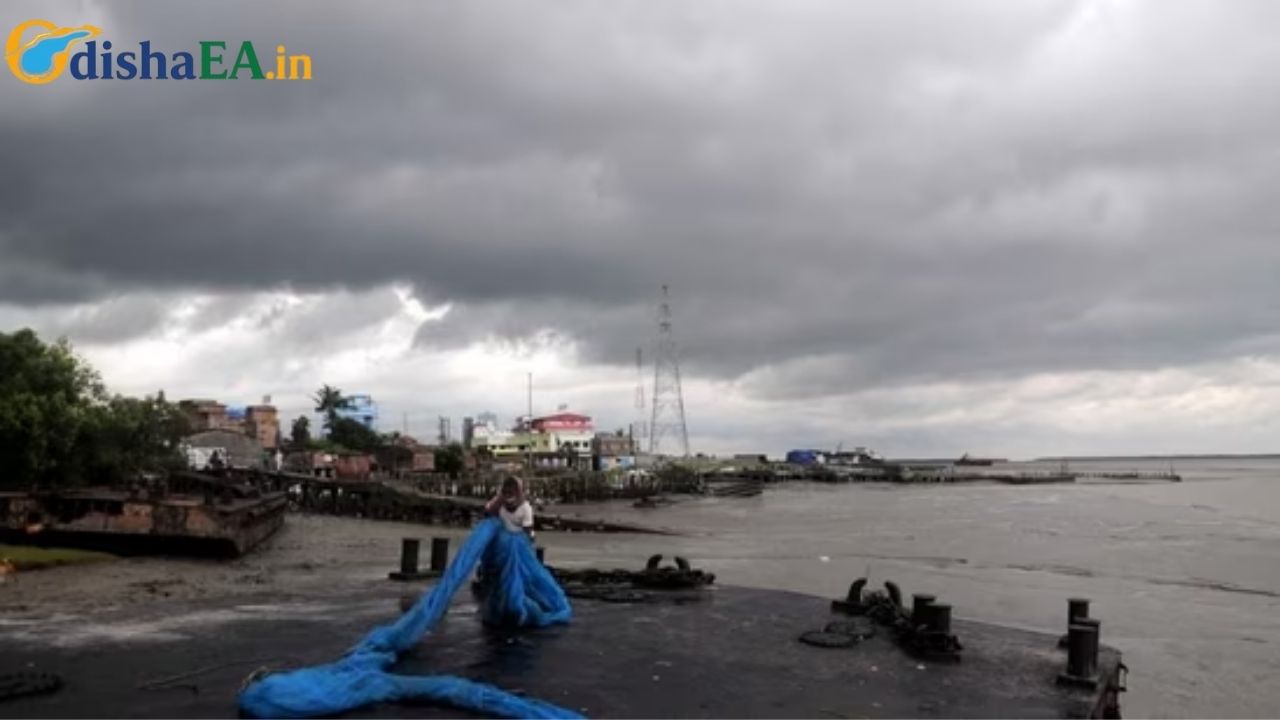When a low-pressure system weakens, most folks think the worst is over. But if you live in Malkangiri, Odisha, today’s forecast is proof that nature still has some heavy cards to play. Despite the system losing strength, the India Meteorological Department (IMD) has warned of torrential rain and possible flooding, especially across southern districts like Malkangiri and Koraput.
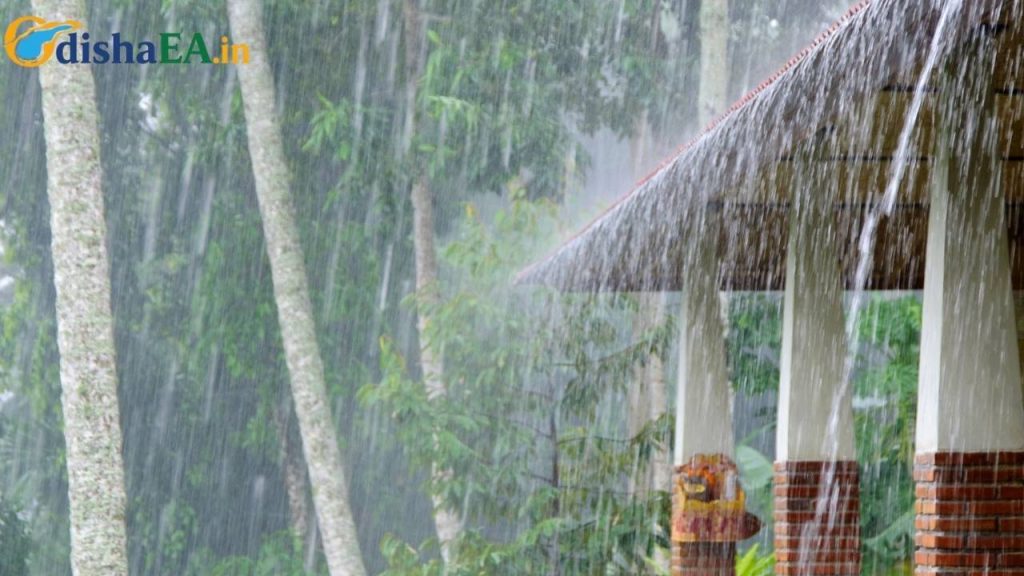
The storm may have calmed a bit, but locals know the deal—roads, bridges, and railways are already waterlogged, and another day of pounding rain could mean serious disruptions to daily life and travel. Whether you’re a farmer, a small business owner, or just trying to get the kids to school, this weather isn’t something to brush off.
Low Pressure Weakens but Malkangiri Braces for a Day of Torrential Rain
| Factor | Details |
|---|---|
| Weather Today | Heavy rain, thunderstorms, gusty winds forecast in Malkangiri and nearby districts. |
| Warnings | IMD issues Orange Alert for Malkangiri. Official IMD website |
| Flooding Reports | NH-326 and MV-96 bridge submerged under 3–4 ft of water; road links to Chhattisgarh and Telangana cut. |
| Impact on Travel | Train services disrupted on Kottavalasa–Kirandul line. |
| Forecast | Rainfall expected to continue in southern Odisha until Sept. 1. |
The low-pressure system may have weakened, but for Malkangiri, the battle with rain is far from over. Roads, bridges, and trains are already down, and with an Orange Alert in effect, it’s critical to stay alert, stay safe, and avoid unnecessary risks.
Weather is one of those things we can’t control, but with awareness and preparation, we can definitely soften its punch. Whether you’re a kid trying to get to school or a pro running a business, being prepared is half the fight.
Understanding What’s Going On
Let’s break this down. A low-pressure area forms when warm, moist air rises and creates a kind of “vacuum” in the atmosphere. That pulls in more air, leading to clouds and rainfall.
- When it’s “well-marked,” it usually means heavy and widespread rainfall is coming.
- As it “weakens,” the system loses some punch—but that doesn’t mean the rain stops. Instead, the downpour spreads out, often lingering longer than expected.
Right now, the low-pressure zone has moved west-northwest across Odisha into Chhattisgarh, but it’s still throwing plenty of water on Malkangiri.
Why This Matters for Malkangiri
Malkangiri is no stranger to floods. This border district, tucked between Odisha, Chhattisgarh, and Andhra Pradesh, is crossed by rivers like the Sabari and Sileru. Add hills and fragile roads, and you’ve got a recipe for landslides, blocked highways, and isolated villages.
For example:
- MV-96 Bridge, a key link on NH-326, is already under 3–4 feet of water. This road connects Odisha to Chhattisgarh and Telangana, and right now, it’s basically a no-go.
- Rail traffic between Andhra Pradesh and Odisha has also been disrupted, with trains on the Kottavalasa–Kirandul line canceled or rerouted.
- Villages near rivers are reporting flash floods that have forced families to higher ground.
When infrastructure takes a hit, it’s not just about being late to work—it’s about food supply chains, emergency health access, and school closures.
The Bigger Picture: Climate and Rainfall Trends
Let’s zoom out for a sec. India’s monsoon season (June–September) brings about 75% of the annual rainfall (World Bank). While that’s vital for crops, it also makes states like Odisha highly vulnerable to climate shocks.
- Malkangiri receives around 1,700 mm of rainfall annually, much of it packed into just three months.
- Studies show that extreme rainfall events in India have increased by about 20% over the last 60 years.
- With climate change, these “out-of-nowhere” heavy showers are becoming more frequent, even when low-pressure systems appear weak.
So, while today’s warning may sound routine, it’s part of a larger trend of unpredictable weather.
Practical Advice: How to Stay Safe
Here’s the lowdown on how locals and travelers can handle the next few days:
1. Avoid Non-Essential Travel
Roads like NH-326 and bridges like MV-96 are flooded. Even SUVs can get stuck in 3 feet of water. If you don’t have to go, don’t risk it.
2. Stock Up on Essentials
Keep food, drinking water, and medicine at home. If you live in a flood-prone area, have dry food like rice, lentils, and biscuits ready.
3. Emergency Numbers
Save local disaster management helplines and hospital contacts. The Odisha State Disaster Management Authority (OSDMA) regularly updates advisories—follow them on.
4. Stay Informed
Check daily updates from the IMD. Don’t rely only on WhatsApp forwards.
5. If You’re a Farmer
Cover your harvested crops, move livestock to higher ground, and secure sheds. The state often announces relief packages, so stay tuned to local news.
Breaking Down the Alerts
- Yellow Alert = Be aware. Rain is coming, but nothing extreme yet.
- Orange Alert = Be prepared. Heavy rain can disrupt life, so limit outdoor movement.
- Red Alert = Take action. Evacuations may be necessary, and major damage is expected.
Right now, Malkangiri is under an Orange Alert, which is serious but manageable—if folks take precautions.
Professional Take: What Local Businesses Should Do
If you run a small shop, transport service, or warehouse in Malkangiri, here are a few quick strategies:
- Protect inventory: Move goods off the ground to avoid water damage.
- Stay cash-light: Power cuts can hit ATMs and payment systems, so keep some cash handy.
- Plan logistics: Trucks and supplies may be delayed, so communicate early with customers.
Odisha’s Flood Nightmare Eases—But Here’s Why Authorities Aren’t Celebrating Yet
Dramatic Footage Shows Truck Carried Away by Flash Floods in Sundargarh, Odisha
Odisha Braces for Heavy Rains as Low-Pressure Area Stays Over Gangetic West Bengal
FAQs
Q1. Will schools in Malkangiri remain open during the rain?
A: Local authorities often decide at the last minute. Keep an eye on district-level announcements.
Q2. How dangerous is it to travel on NH-326 right now?
A: With the MV-96 bridge under water, travel is highly risky. Avoid unless it’s life or death.
Q3. When will the rain stop?
A: IMD forecasts suggest rain will continue until September 1, though intensity may reduce.
Q4. Are relief camps being set up?
A: Yes, district authorities usually prepare shelters in schools and government buildings when waterlogging gets severe.
Q5. Is this linked to climate change?
A: While one event can’t be blamed solely on climate change, studies show extreme rainfall is rising across India due to warming oceans and atmosphere.

